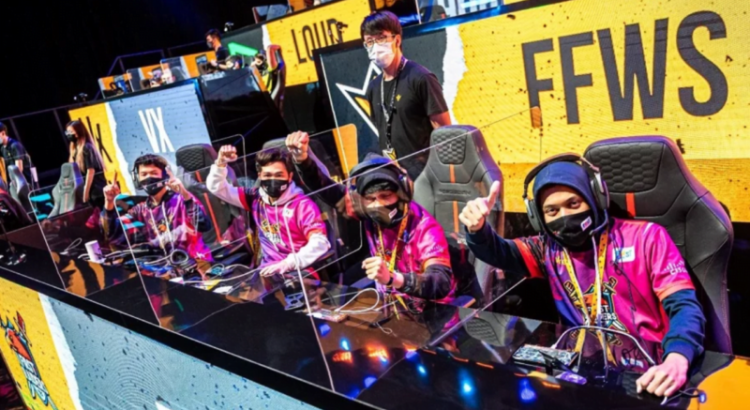The Free Fire World Series (FFWS) 2021 Singapore holds a record with 5.4 million peak viewers. This is ahead of even tournaments like The International and League of Legends World Championship (not including Chinese viewership numbers).
However, the recently-concluded FFWS Bangkok had a peak viewership of just 354,000 – a distant figure from the numbers it was achieving just a year back. While a fall in esports viewers is something that many games have seen in 2022, Free Fire’s story is something different. Losing 90 percent of your total viewers can’t just be blamed on a dip in interest or the pandemic ending.
Esports.net takes a look at the reasons behind this fall from grace for the mobile battle royale title.
Free Fire esports viewership falls in all regions
Comparing the language-wise numbers of the FFWS Singapore and FFWS Bangkok makes one thing clear – the fall in viewership is something that has been witnessed across all regions. The Hindi, Portuguese, and Indonesian language streams all had more than 1 million viewers in the FFWS Singapore. In the FFWS Bangkok, they all had less than 100,000.
For some regions, the fall is more obvious than others. One of them is India which used to be one of the biggest regions for Free Fire. The region contributed a lot to the overall viewership as well. However, the game was banned by the country’s government for alleged data privacy reasons in February 2022. From 1.9 million viewers in the FFWS Singapore, the Hindi stream fell by nearly 98 percent to 22,700 in the FFWS Bangkok.
Trouble at Garena
It’s become obvious now that Free Fire is losing its footing in its established regions like Latin America and Southeast Asia. While this could be due to tough competition from rival games like PUBG Mobile – there’s also been trouble at Garena to blame for it.
In September, Garena’s parent company Sea Ltd. reported a $1 billion loss in its quarterly financials report. As a result, it laid off workers across all its divisions, which includes Garena. According to a report, 15 percent of the game’s staff in the Shanghai office were let go.
These layoffs would certainly have affected the overall functioning of the game and its esports scene. Many of Garena’s staff also switched to other companies. One such glaring problem was observed in Brazil.
Brazil is the most developed region for Free Fire esports with a franchised league called the LBFF. The LBFF has three series – Series A, B, and C with each being for pro, semi-pro, and amateur players. To put into perspective the scope of Free Fire esports in Brazil, the winner of the Esports Team of the Year at the Esports Awards 2022, LOUD, was a Free Fire org in its early days.
Nonetheless, as the layoffs hit Garena – there was a period of strong uncertainty for LBFF teams. The teams have publicly complained of Garena’s lack of information about the 2023 season. Some of the best Free Fire players and teams even refused to confirm their participation.
There is still some uncertainty about Free Fire esports’ plans for next year.
Shutting down of BOOYAH! hits Free Fire Esports Viewership Numbers
As a result of the losses sustained, Sea Ltd. shut down its streaming platform BOOYAH!. The platform contributed hugely to the overall viewership – mainly because it gave Garena a chance to directly control its audience and also reward them with in-game items for watching tournaments.
Behind YouTube, the most-watched streaming platform for the FFWS Singapore was BOOYAH. Because of its shutting down, that number dropped to zero in the FFWS Bangkok. It remains to be seen what lies ahead for Free Fire esports.
Will the viewership continue to fall or will it stabilize in the future?

